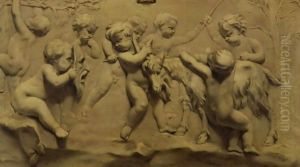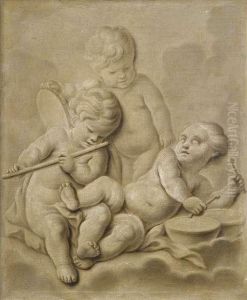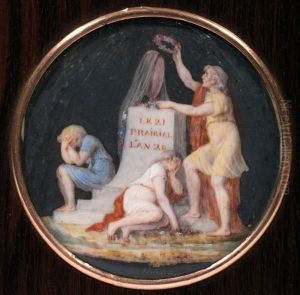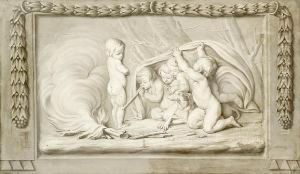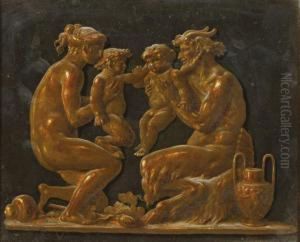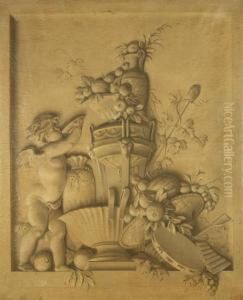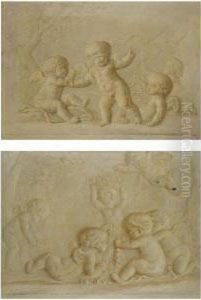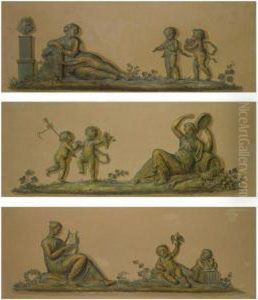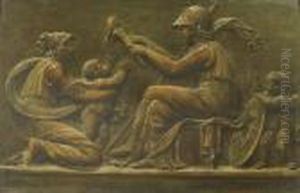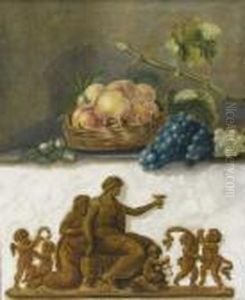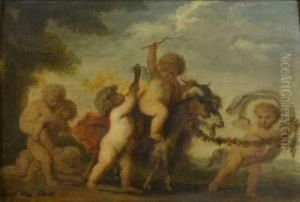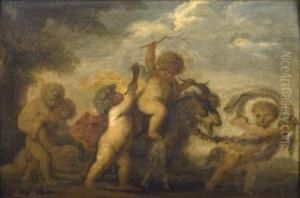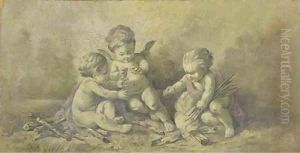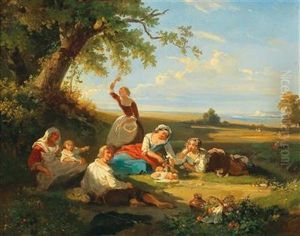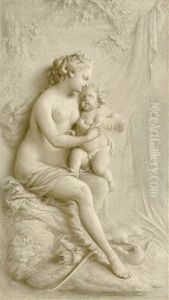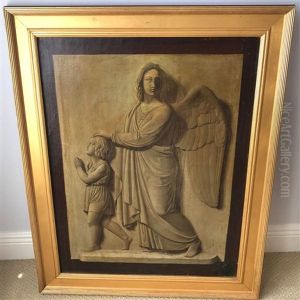Piat Joseph Sauvage Paintings
Piat Joseph Sauvage was a notable figure in the realm of European art, particularly celebrated for his contributions to the trompe-l'oeil technique, which creates an optical illusion of three-dimensionality. Born in Tournai, which was then part of the Austrian Netherlands (now in Belgium), Sauvage discovered his passion for art at a young age. His early work primarily consisted of decorative paintings and designs, but he soon developed a keen interest in the trompe-l'oeil style, which would define his career.
Sauvage's talent did not go unnoticed, and he received commissions from various aristocrats and members of the European elite. His ability to blend painting with architecture, creating illusions that seemed to extend the physical space of rooms and buildings, was highly sought after. This skill made him a favored artist among those looking to add an extra layer of sophistication and intrigue to their estates.
Throughout his career, Sauvage traveled extensively across Europe, working in countries such as France, Italy, and his native Belgium. His experiences abroad allowed him to absorb influences from various artistic traditions, which he skillfully integrated into his own work. Despite the popularity of his trompe-l'oeil paintings, detailed records of his commissions and the locations of many of his works have been lost over time, making it challenging to fully assess his impact on the art world.
Sauvage's influence extended beyond his lifetime, contributing to the development of trompe-l'oeil as a respected genre in European art. His work not only showcased his mastery of illusion but also his profound understanding of space and perspective. Although not as widely known today as some of his contemporaries, Sauvage remains a significant figure in the history of European art for his innovative approach to painting and his contribution to the trompe-l'oeil technique.
He passed away in 1818, leaving behind a legacy that has continued to inspire artists and captivate art enthusiasts. Despite the relative obscurity of his name in the broader narrative of art history, Piat Joseph Sauvage's work is a testament to the creativity and technical skill that defined the European art scene in his era.

